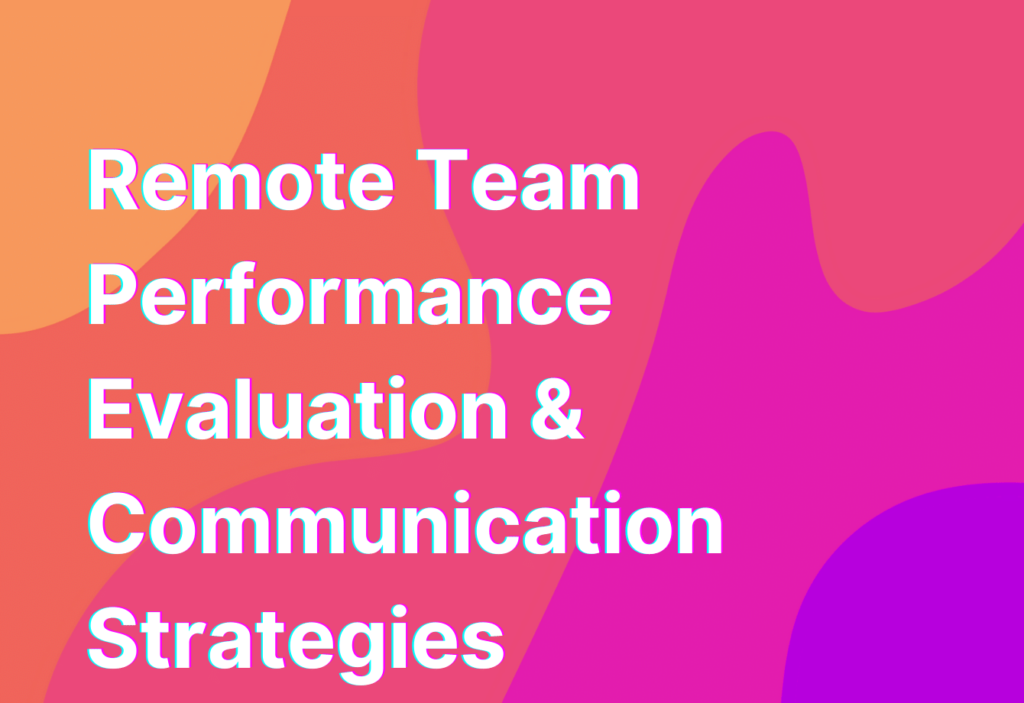Remote Team Performance Evaluation & Communication Strategies
Hey there, remote work enthusiasts! It’s Ashley here, your go-to gal for all things remote work. Today, I want to dive into the topic of remote team performance evaluation and communication strategies. As someone with 10 years of remote work experience in the tech industry, I’ve learned a thing or two about how to effectively evaluate and communicate with remote teams. So, grab your favorite cup of coffee and let’s get started!
The Importance of Performance Evaluation
Performance evaluation is a crucial aspect of managing a remote team. It allows you to assess the strengths and weaknesses of your team members, identify areas for improvement, and ultimately, drive better results. Without proper performance evaluation, it’s like driving blindfolded – you have no idea where you’re going or how to get there.
One effective strategy for performance evaluation is setting clear goals and expectations. When your team members know exactly what is expected of them, they are more likely to perform at their best. Use tools like Trello or Asana to track progress and provide feedback in real-time. Remember, communication is key!
Communication Strategies for Remote Teams
Speaking of communication, let’s talk about some strategies to keep your remote team connected and engaged. Remote work can sometimes feel isolating, but with the right communication tools and techniques, you can foster a sense of belonging and collaboration.
1. Embrace Video Conferencing
Video conferencing is a game-changer for remote teams. It allows for face-to-face interactions, which can help build trust and strengthen relationships. Platforms like Zoom or Microsoft Teams offer seamless video conferencing capabilities, making it feel like you’re all in the same room, even if you’re miles apart.
2. Utilize Project Management Tools
Project management tools are a remote team’s best friend. They help streamline workflows, track progress, and ensure everyone is on the same page. Tools like Trello, Asana, or Monday.com provide a centralized hub for collaboration, making it easy to assign tasks, set deadlines, and monitor project status.
3. Foster a Culture of Transparency
Transparency is key in remote teams. Encourage open and honest communication, and create a safe space for team members to share their thoughts and ideas. Tools like Slack or Microsoft Teams can facilitate real-time communication and foster a sense of transparency within the team.
4. Schedule Regular Check-Ins
Regular check-ins are essential for remote teams. They provide an opportunity to discuss progress, address any challenges, and offer support. Whether it’s a weekly team meeting or a one-on-one video call, make sure to schedule regular check-ins to keep everyone on track.
5. Celebrate Wins and Milestones
Remote work can sometimes feel like a never-ending grind, so it’s important to celebrate wins and milestones along the way. Recognize and appreciate your team members’ hard work and achievements. A simple shoutout in a team chat or a virtual happy hour can go a long way in boosting morale and fostering a positive team culture.
Now that we’ve covered some effective communication strategies for remote teams, it’s time to put them into action. If you’re looking for more quick wins to improve your remote team’s communication, check out this article on Remote Teamer. It’s packed with practical tips and tricks to enhance your team’s communication game.
Wrapping Up
Performance evaluation and communication are the pillars of successful remote teams. By setting clear goals, utilizing the right tools, fostering transparency, scheduling regular check-ins, and celebrating wins, you can create a thriving remote team that achieves outstanding results. So, go ahead and implement these strategies, and watch your remote team soar to new heights!


